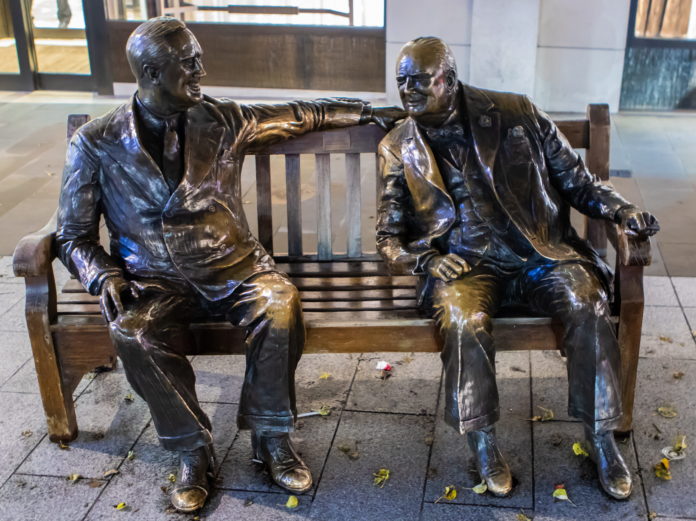The cosy hegemony of the US and the UK is ending. Melanie Butler and Ron Ragsdale examine why
Shortly after the Second World War, representatives of the UK and the US government met at a British country mansion to divide the world into spheres of influence for English Language Teaching (ELT). The British got Europe, the Middle East, Africa and the Indian subcontinent. America took East Asia and Latin America.
But as the last evacuation flights leave Wuhan, as we report on page 6, it is not just the two ELT superpowers flying their teachers out. Australians, Canadians and New Zealanders have been flown home, with the Irish hitching a ride on the UK flights.
Is the age of the Anglo-American ELT hegemony over? As two editors from the two ELT superpowers, one British and the other American, it looks like it to us.
Even in the glory days, the duopoly was not in lockstep, following different methodological pathways. Take the difference in the way we educate children from non-English speaking backgrounds.
As we report on page 10, most US states educate English Language Learners (ELLs) separately from their L1 peers for part or all of the school day. As our report on the latest research shows, L2 children in ‘sheltered’ English-only programmes are seen as less able by their teachers, and perform worse on tests, than L2 children with the same level of English who are assigned to mainstream or bilingual classes.
“The best ELL outcomes are found in Canada, New Zealand and Australia.”
The whole idea of separating children with what the British call ‘English as an Additional Language’ (EALs) comes as a shock in the UK, where the practice has been banned since the 1980s as discriminatory. Bilingual programmes are not an option in a country where 20 languages in one school is commonplace and one London school boasts 71.
So, which of the big two does best? The results of ELLs in the Pisa tests show the British edging it over the US, but the best ELL outcomes are found in Canada, New Zealand and Australia, which all have a higher percentage of L2 school children than the ‘big two’.
The situation appears to be the same in the private language school market, where the UK and the US appear to be taking the largest hit, as we report on page 12. In both countries, teachers are taking action, with teachers protesting their redundancy in London on page 7, while in Global News, a US ELL specialist teacher is running to be speaker of the Kentucky legislature.
Are the Irish and the Canadians taking over? Maybe. They have an advantage: they are not monolingual countries, they run school systems in more than one language. The evidence and the neuroscience is clear: the monolingual mindset that bans L1 in class needs to go.
Ask Josefina Tinajero, our bilingual thought leader. She tells us on page 30 what it felt liked being an L1 Spanish speaker dubbed slow at reading in the second grade of an English-only school.
“I felt ashamed and humiliated, frustrated and at times even angry. Of course, I could read! There just weren’t any books in Spanish . . . mine became a world of social isolation and distance.”
This English-only Empire must end, ojalá!





